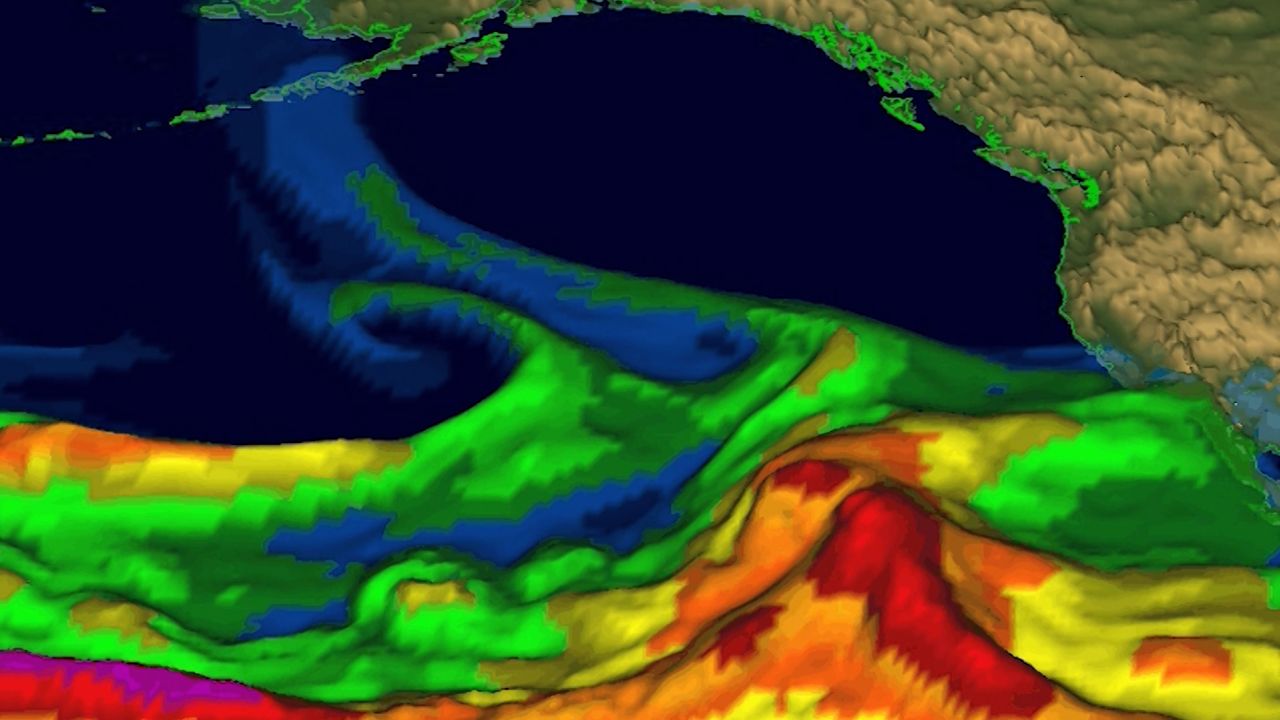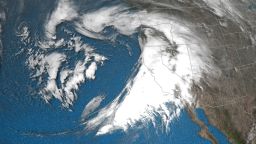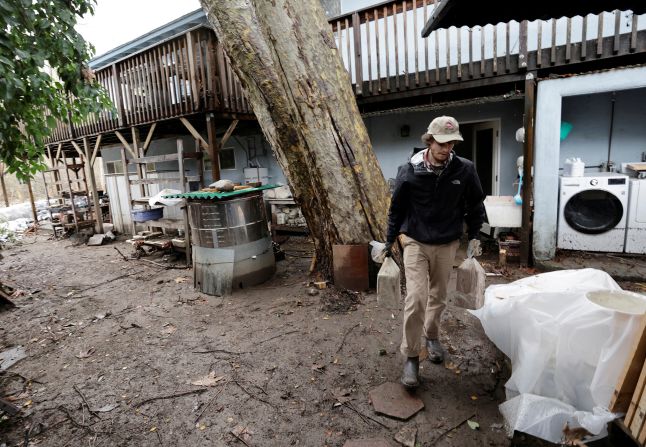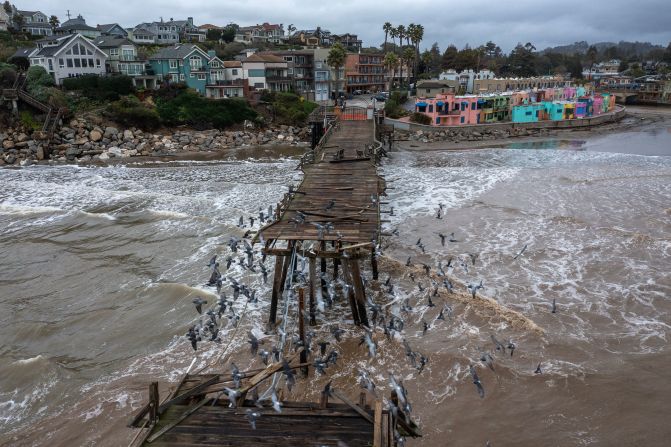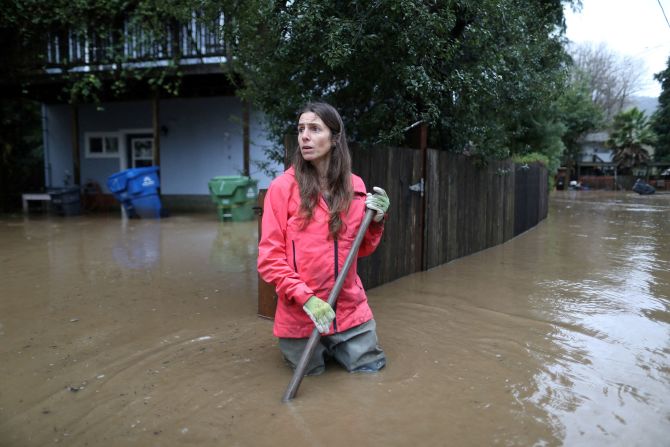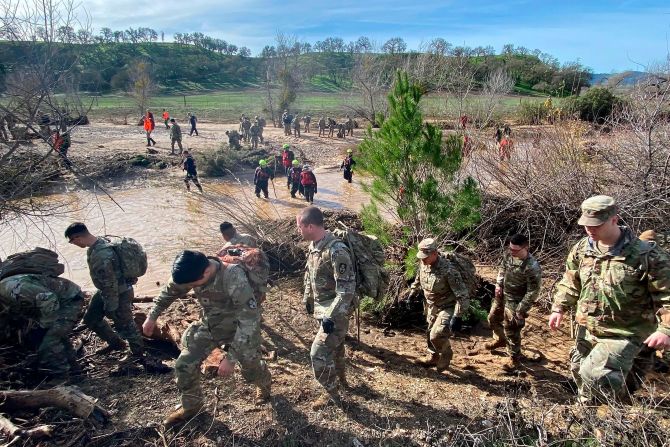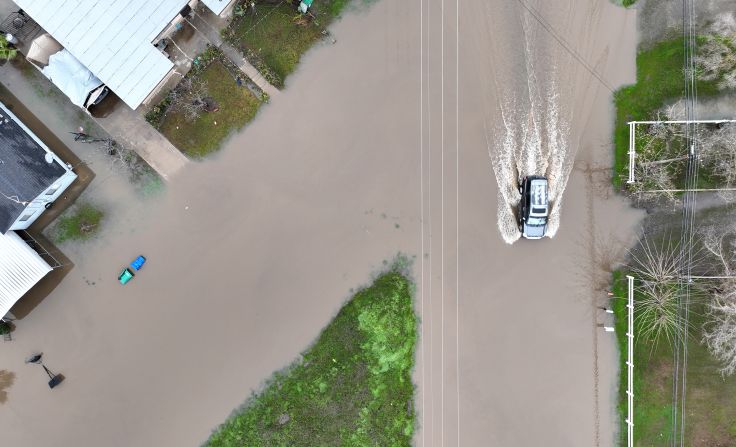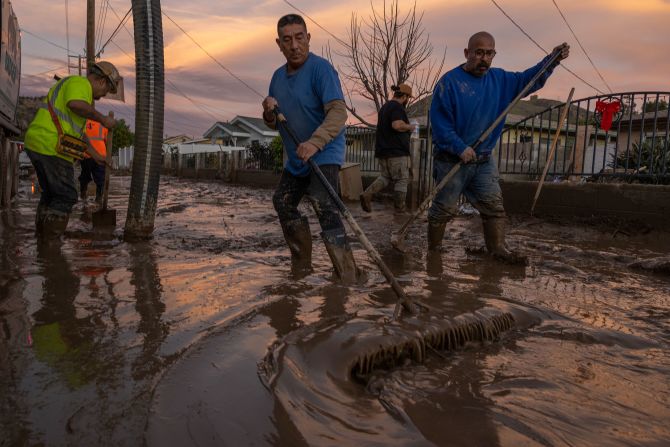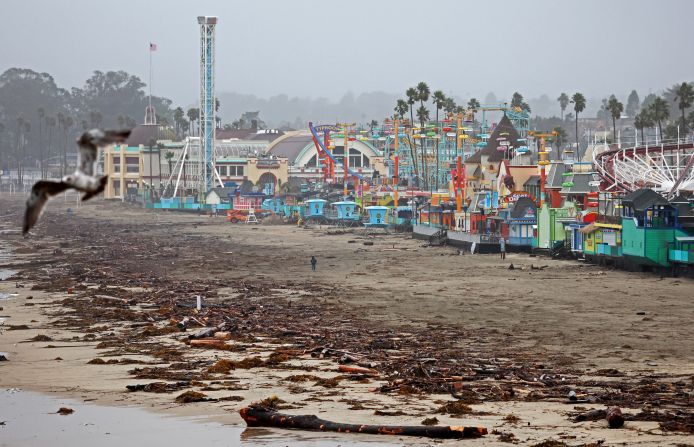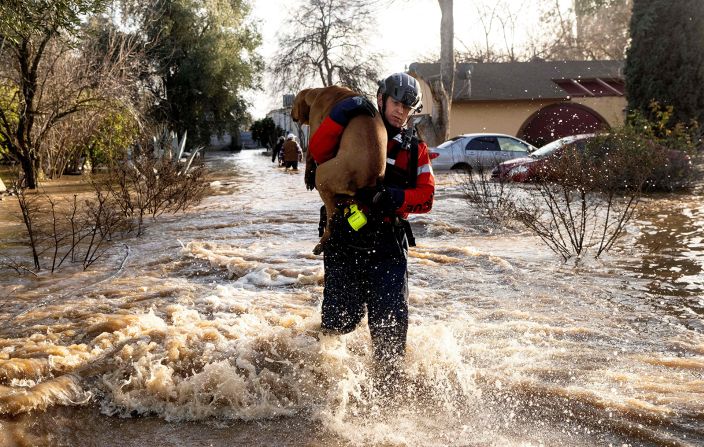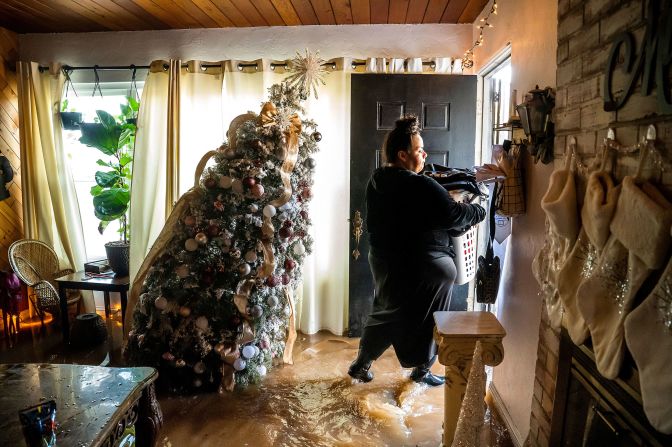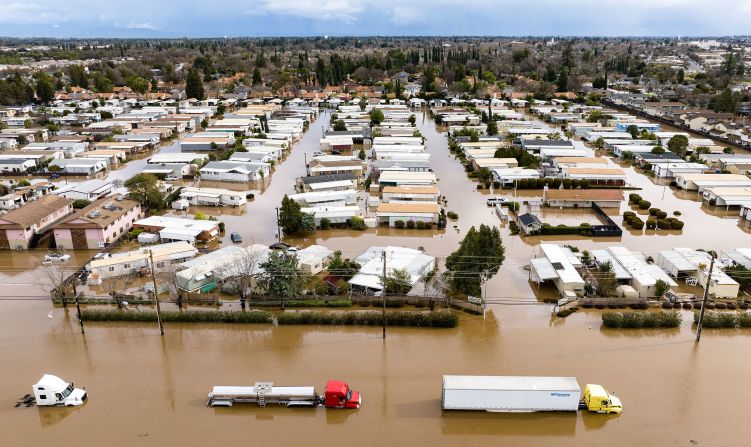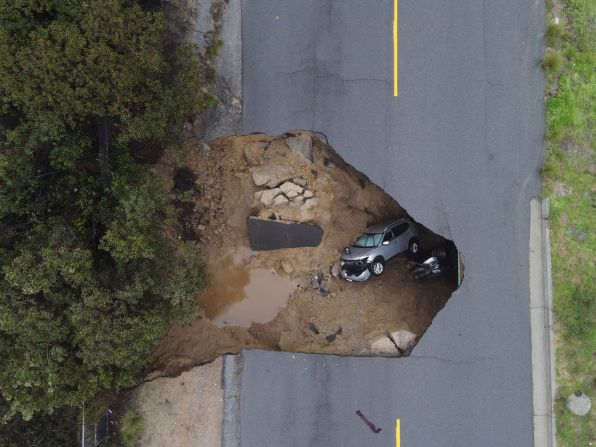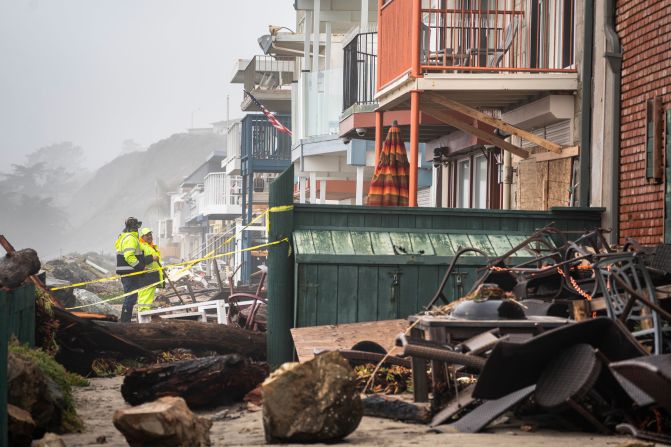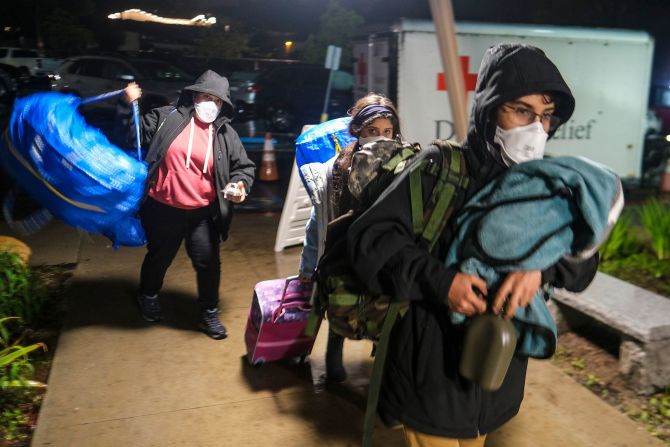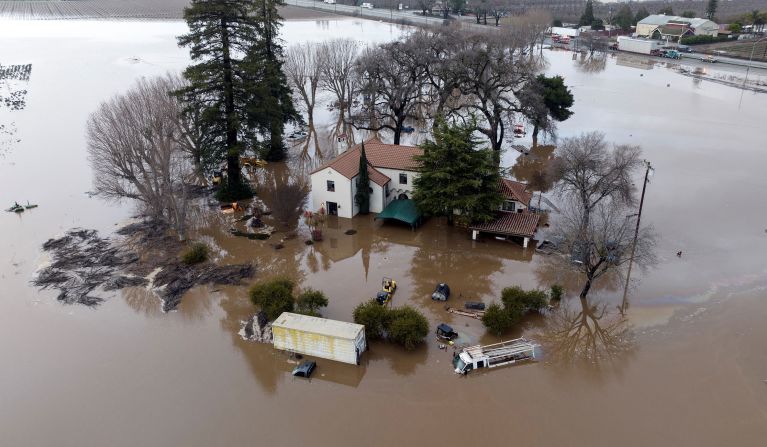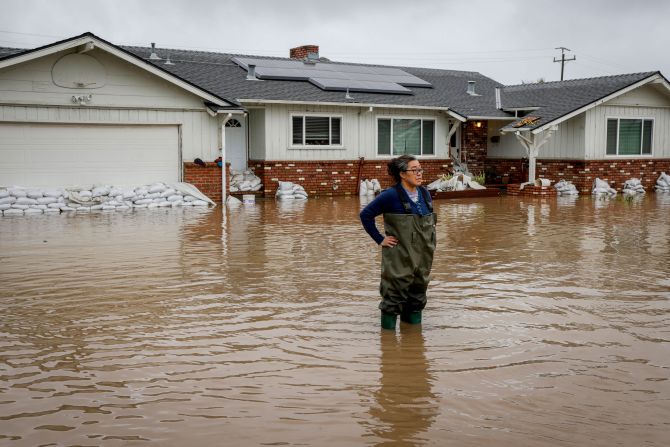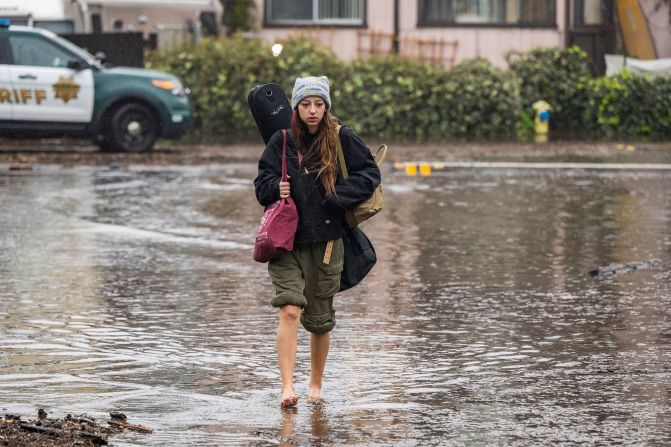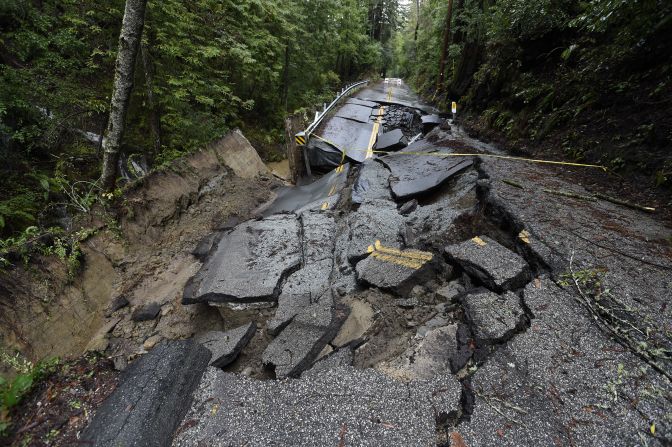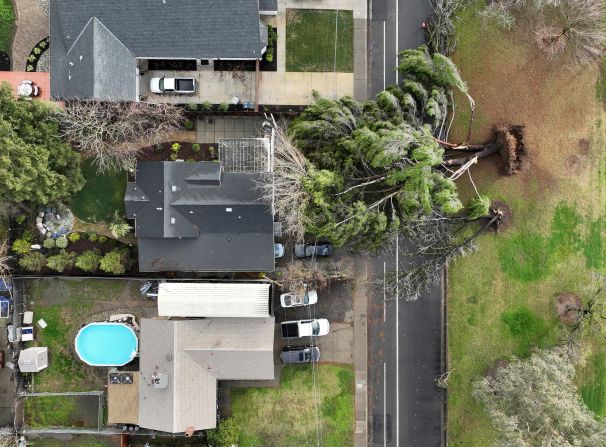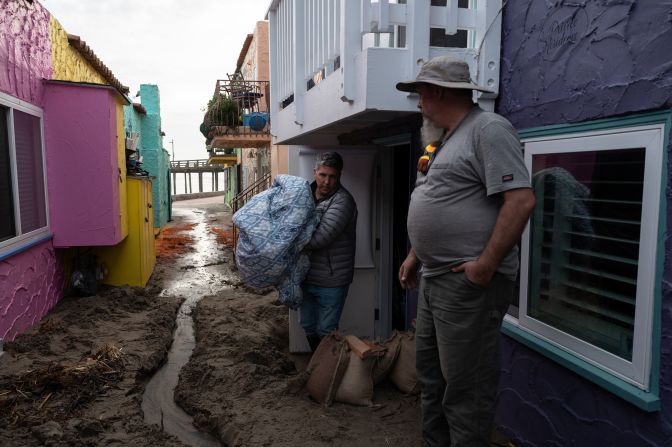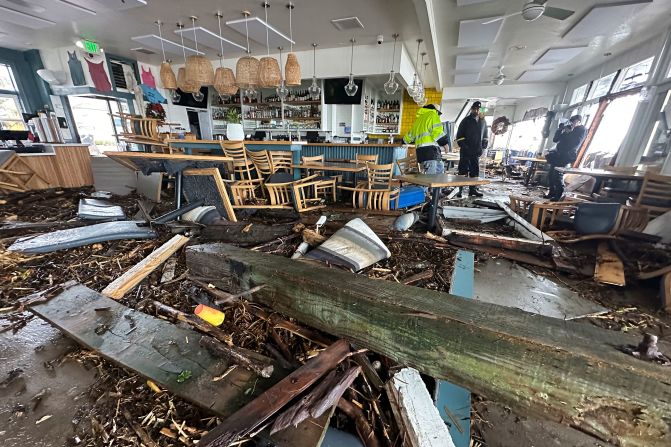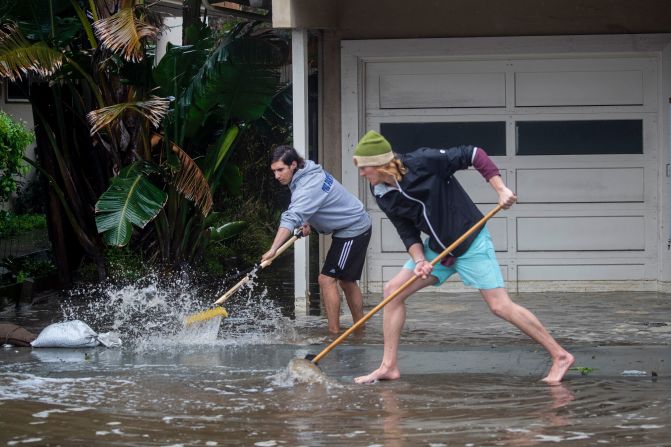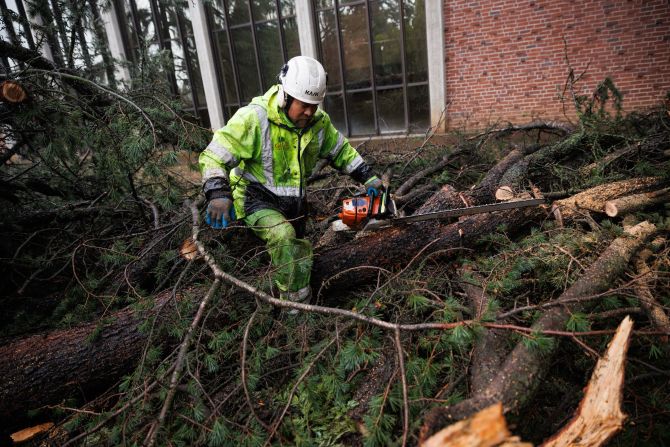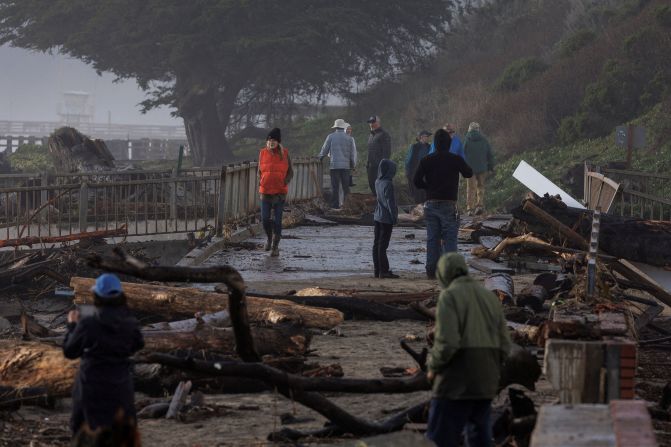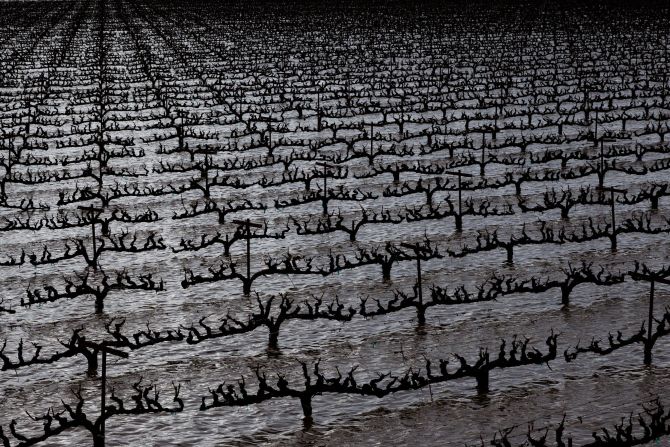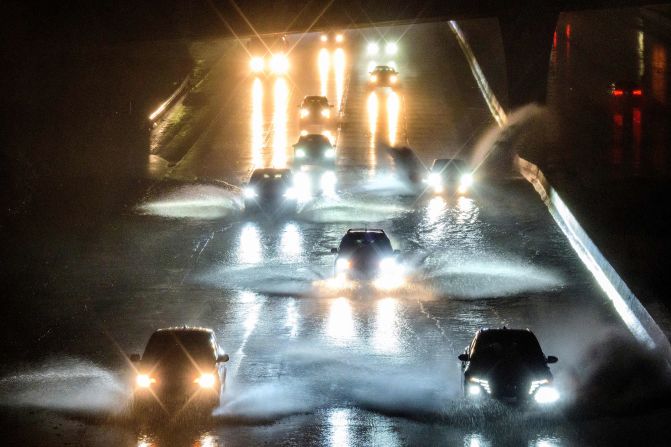An atmospheric river is a plume of moisture that helps carry saturated air from the tropics to higher latitudes, delivering unrelenting rain or snow.
Think of it as a fire hose that aims at – then drenches – a particular region.
Typically 250 to 375 miles wide, atmospheric rivers can stretch more than a thousand miles long, the National Oceanic and Atmospheric Administration says.
In the western US, they account for 30% to 50% of annual precipitation.
While atmospheric rivers are an incredibly important source of rainfall, they can also bring flash flooding, mudslides and landslides, sometimes killing people and destroying property.
“When atmospheric rivers pass over land they can cause conditions similar to those of hurricanes with intense and rapid rainfall, cyclone force winds, and significantly increased wave heights,” NOAA says.
Atmospheric rivers happen all over the world
Ten or more atmospheric rivers can be happening at once across the globe.
A well-known and strong one is the Pineapple Express, with moisture transported from the tropical Pacific around Hawaii to the US and Canadian West Coasts.
The eastern half of the US also experiences atmospheric rivers, with moisture pulled from the Gulf of Mexico.
“Atmospheric rivers are more frequent on the East Coast than they are on the West Coast,” said Jason Cordeira, associate professor of meteorology at Plymouth State University. “They’re just not as impactful and don’t usually produce as much rainfall.”
Western Europe and North Africa also experience frequent atmospheric rivers, as do New Zealand and Australia.
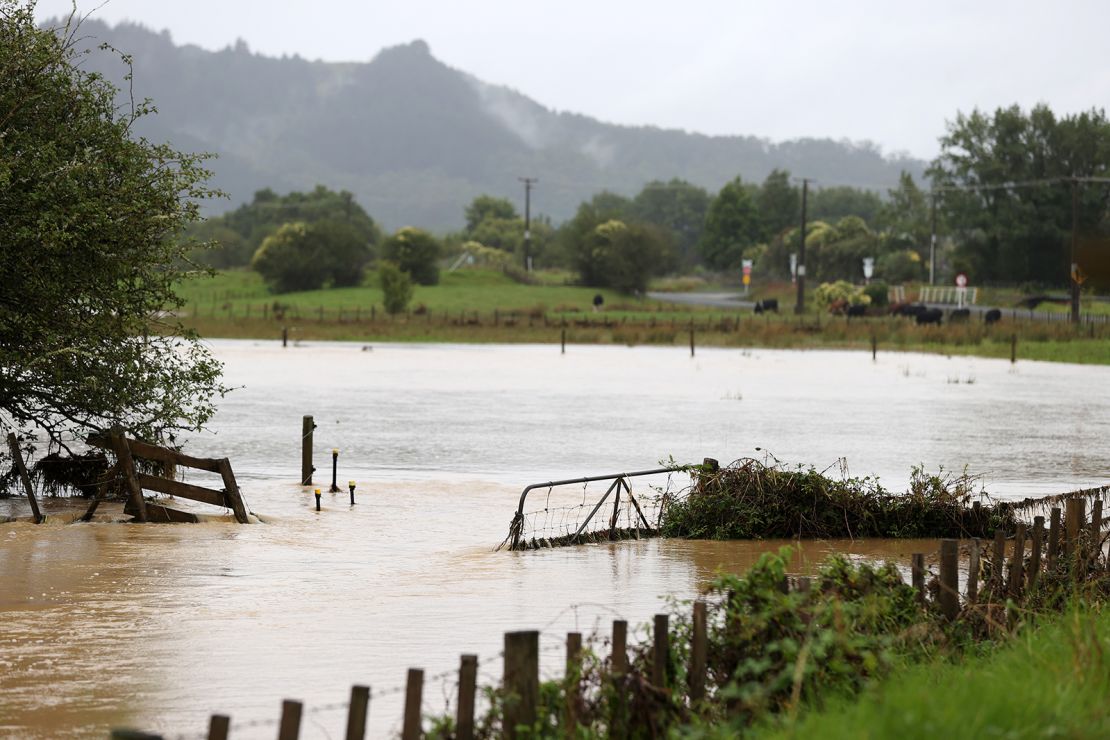
Most notable atmospheric river events
• In the winter of 2023, a series of atmospheric rivers sent an unprecedented amount of moisture to drought-parched California. Over roughly three weeks, parts of the state got between 2 and 3 feet of rain. The coast was battered by 30-foot waves, and the state endured 100-mph winds. At least 20 people died.
California's flooding, in pictures
• In October of 2021, a strong atmospheric river hit the San Francisco Bay area exceptionally hard. Winds exceeded 80 mph, and 60-foot waves were recorded. In just three days, the storm delivered as much as 15% of annual rainfall to the region.
• California’s megaflood of 1861 is the state’s most catastrophic atmospheric river. The 43-day pounding by unrelenting rain turned the Central Valley into an inland sea. Thousands of people died, and downtown Sacramento was submerged in 10 feet of water and mudslide debris.
Climate change and its impact on atmospheric rivers
As the world warms, the atmosphere can hold more moisture – which will lead to rainier atmospheric river events.

“It’s expected that as the air temperatures increase, the air can hold more water vapor, and therefore any storms that are comprised of water vapor will have more of it,” Cordeira explained.
“So, an atmospheric river, which is defined as a region of water vapor, will likely become more intense. Their frequency may not be more common, but their intensity could become larger.”
Atmospheric rivers will be “significantly longer and wider than the ones we observe today, leading to more frequent atmospheric river conditions in affected areas,” a NASA-led study found.
The frequency of the most intense atmospheric rivers will likely double, the study found.
CNN meteorologist Monica Garrett contributed to this report.

